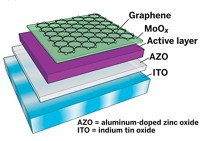Advertisement
Grab your lab coat. Let's get started
Welcome!
Welcome!
Create an account below to get 6 C&EN articles per month, receive newsletters and more - all free.
It seems this is your first time logging in online. Please enter the following information to continue.
As an ACS member you automatically get access to this site. All we need is few more details to create your reading experience.
Not you? Sign in with a different account.
Not you? Sign in with a different account.
ERROR 1
ERROR 1
ERROR 2
ERROR 2
ERROR 2
ERROR 2
ERROR 2
Password and Confirm password must match.
If you have an ACS member number, please enter it here so we can link this account to your membership. (optional)
ERROR 2
ACS values your privacy. By submitting your information, you are gaining access to C&EN and subscribing to our weekly newsletter. We use the information you provide to make your reading experience better, and we will never sell your data to third party members.
Materials
Semiconductor Films Made On Water
Researchers devise a simple, scalable way to produce nanomembranes for flexible electronics
by Journal News and Community
February 27, 2012
| A version of this story appeared in
Volume 90, Issue 9
Materials scientists have demonstrated a simple, inexpensive technique for growing ultrathin semiconductor sheets on the surface of water (ACS Nano, DOI: 10.1021/nn2050906). Current methods for making thin films, or nanomembranes, involve growing the materials on a solid substrate such as silicon and then etching away the substrate to release the membrane. This expensive, time-consuming method limits the types of materials that scientists can make because the membrane’s crystal structure ends up matching that of the substrate. In the new method, Xudong Wang and colleagues at the University of Wisconsin, Madison, ditched the usual solid substrate and instead simply mixed two zinc oxide precursors in water and then added a high concentration of the surfactant sodium dodecyl sulfate. In a few hours, the water was covered with a zinc hydroxy dodecyl sulfate membrane a few hundred nanometers thick. The researchers then scooped up the film using a silicon or carbon substrate and heated it to produce a final zinc oxide film. Wang thinks the method holds promise for producing flexible electronics, light-emitting diodes, and medical sensors.



Join the conversation
Contact the reporter
Submit a Letter to the Editor for publication
Engage with us on Twitter